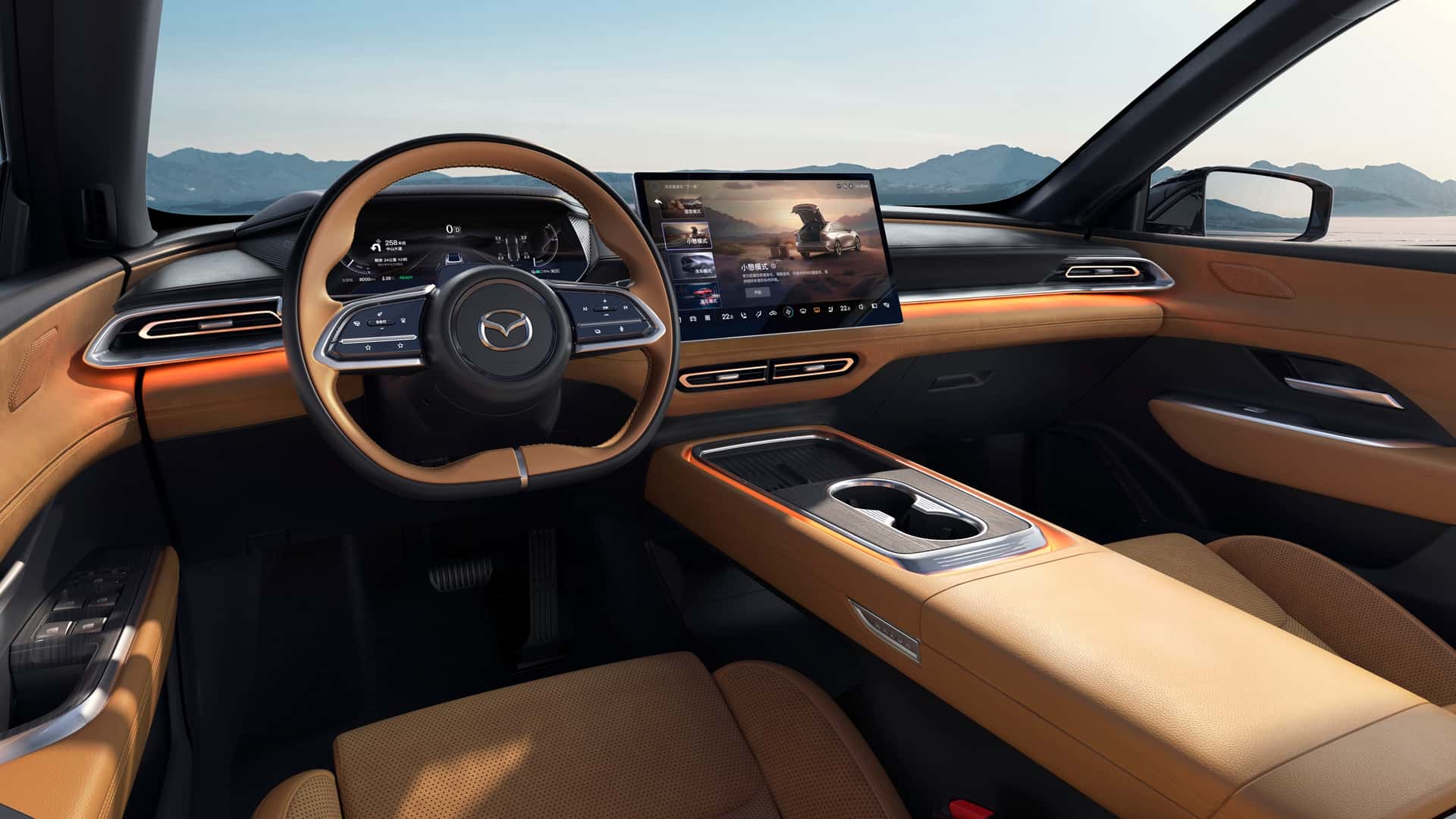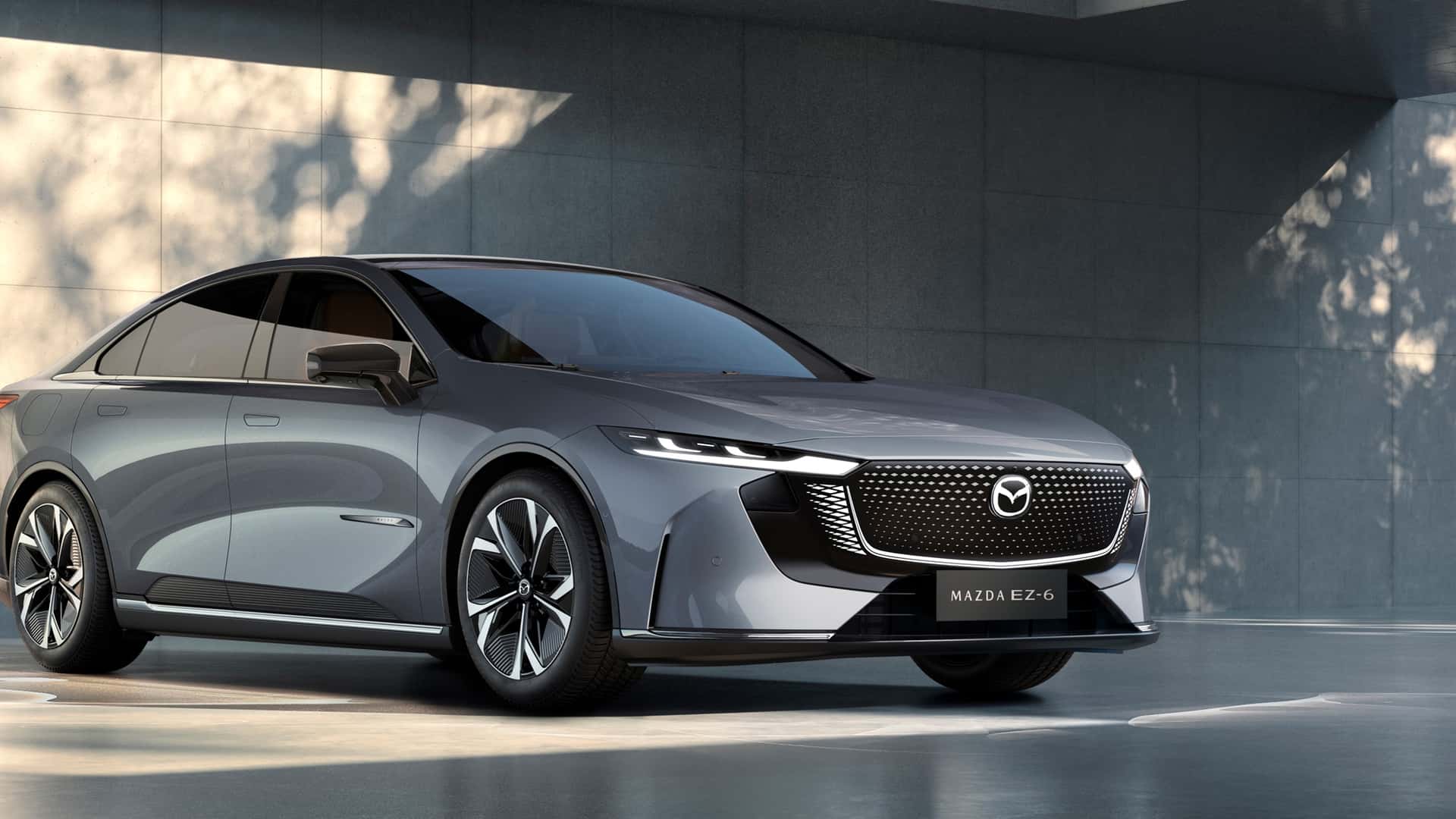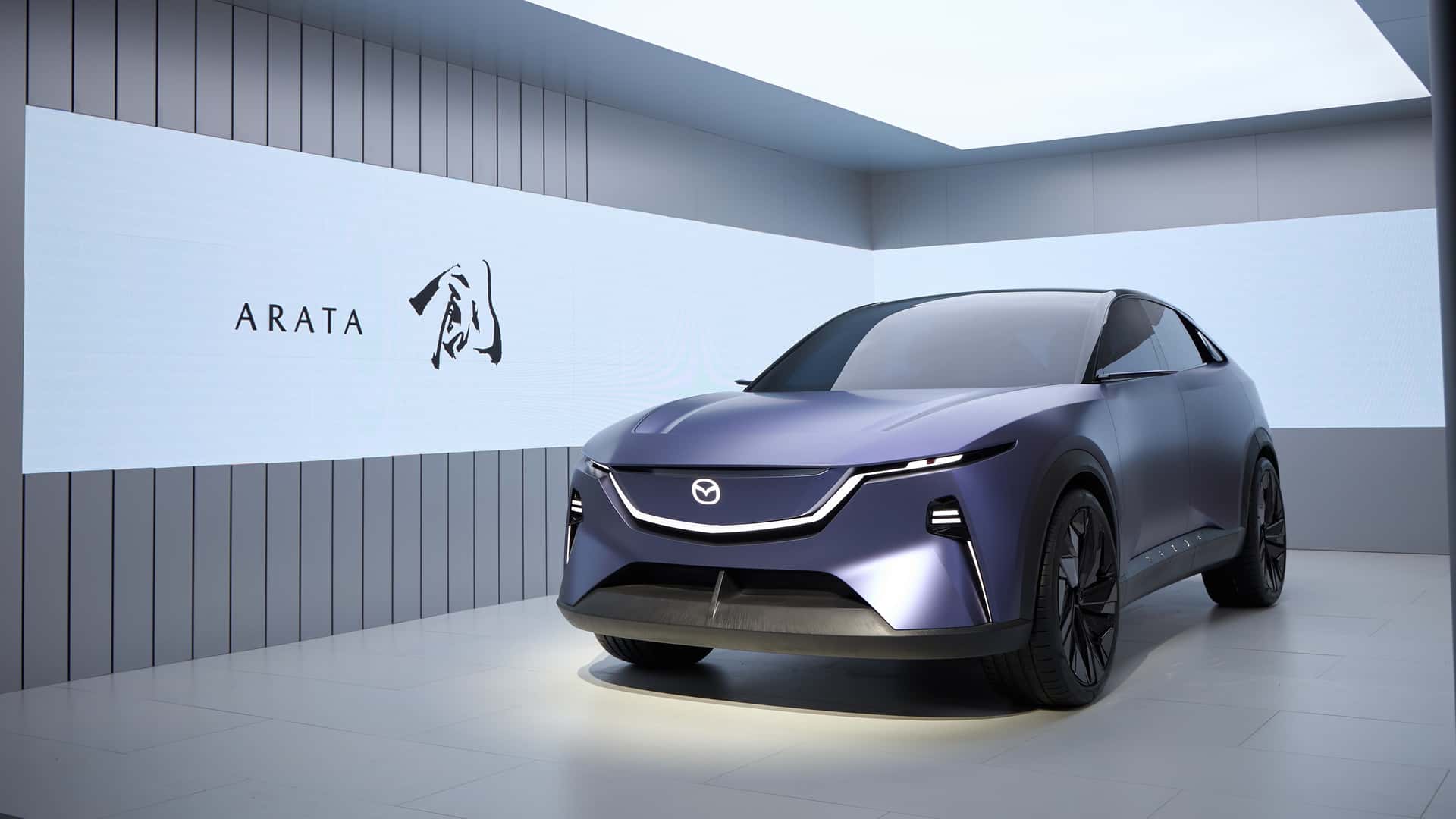- Mazda is among several Japanese carmakers slow to adopt electric cars.
- Thanks to a joint venture with China’s Changan Automobile, there’s a new Mazda EV in the pipeline called the EZ-6.
- It will go on sale in Europe and China this fall.
Mazda is one of the several Japanese automakers labeled as a “laggard” in the electric vehicle race. And for the past few years it has been in a crisis over its largely undefined EV plans.
The automaker, known for its sporty models like the MX-5 Miata and the famous rotary engines, barely has any presence in the U.S. EV market. The only two electrified models it sells are the CX-70 and CX-90 plug-in hybrids. Internationally, however, Mazda will soon offer the EZ-6 electric sedan.
Gallery: 2025 Mazda EZ-6








At an event in Japan today, along with its joint venture partner Chongquing Changan Automobile, Mazda said that the 2025 EZ-6 sedan would be its “first global new energy vehicle.” The concept was first showcased a few months ago at Auto China 2024. The production version will launch in China and Europe in the fall of this year.
This may excite Mazda’s fans stateside, but this model will be manufactured in China. So it’s highly unlikely that it will ever arrive in the U.S., given the stringent tariffs on imported Chinese-made cars. For Mazda, however, it’s good news. The model may help ease some pressure and possibly create a more enduring electrification journey going forward if buyers warm up to it.
The EZ-6 sedan is based on the Changan Deepal SL03. But it’s not a product of simple badge engineering. It’s a good looking car with classic Mazda flair. The rear-wheel-drive electric sedan has an old-school silhouette, mixing sharp angles with smooth curves. The front is highlighted by a sharp nose, sleek headlamps and a slender grille.

Inside, it looks upmarket as well. There’s a panoramic glass roof, floating center screen, digital gauge cluster, wireless chargers and a large and wide center tray.
Mazda hasn’t revealed powertrain and battery details yet, but it said previously that the all-electric version would have a range of 600 km (372 miles) whereas the hybrid model will cover an impressive 1,000 km (621 miles). It’s worth noting that these figures are on the overly optimistic China Light Duty Vehicle-Test Cycle (CLTC).
Changan’s model is offered as a range-extender, so it’s unclear if Mazda would also have its own version of that. What’s clear is that it will adopt Changan’s advanced driver assistance system (ADAS). The EZ-6 will come equipped with Level 2.5 driver assistance features with a robust hardware that includes a seven nanometer Qualcomm chip, four exterior HD cameras and 12 radars.
Gallery: Mazda Arata concept








Mazda also showcased the Arata electric SUV concept early this year. That would have probably made more sense for the U.S. given our appetite for SUVs. But it’s set to enter production by the end of next year in China, so the brand’s U.S. EV line-up will continue to look bare, at least in the near future.
It has the MX-30 range extender EV in its portfolio but that’s on sale only in Europe. InsideEVs reviewed that model early this year and found that it’s pleasant to drive, but has plenty of room for improvement.
Mazda, a renowned automobile manufacturer, recently introduced its new electric vehicle (EV) to the market, touting it as “truly global.” While this assertion may hold true in terms of design and performance, there is one glaring problem that could hinder its success in the highly competitive EV market.
The new Mazda EV, named the MX-30, is indeed a well-engineered vehicle that offers impressive range and performance. With a stylish exterior and a comfortable interior, it is sure to attract consumers from all over the world. Additionally, its innovative features and environmentally-friendly design make it a compelling option for those looking to reduce their carbon footprint.
However, the major drawback of the Mazda MX-30 lies in its battery size. With a relatively small battery capacity of just 35.5 kWh, the vehicle is limited in terms of range when compared to some of its competitors. This could prove to be a significant disadvantage for consumers who prioritize long-distance driving and require a vehicle with a larger range.
In a market where range anxiety is a common concern among consumers, the limited range of the Mazda MX-30 could deter potential buyers from choosing it over other EVs with larger battery capacities. While Mazda has stated that the MX-30 is designed for urban use and daily commuting, the reality is that many consumers still value the convenience of being able to travel long distances without having to worry about recharging frequently.
Despite this one flaw, Mazda remains optimistic about the global appeal of the MX-30 and is confident that it will be well-received by consumers worldwide. The company’s commitment to sustainability and innovation is evident in the design of the vehicle, and its efforts to reduce carbon emissions through electrification are commendable.
In conclusion, while the Mazda MX-30 may be “truly global” in its design and performance, the limited battery capacity poses a significant challenge that could affect its market success. As the demand for EVs continues to grow, it will be crucial for Mazda to address this issue and consider offering a variant with a larger battery capacity in order to compete more effectively in the competitive EV market.

